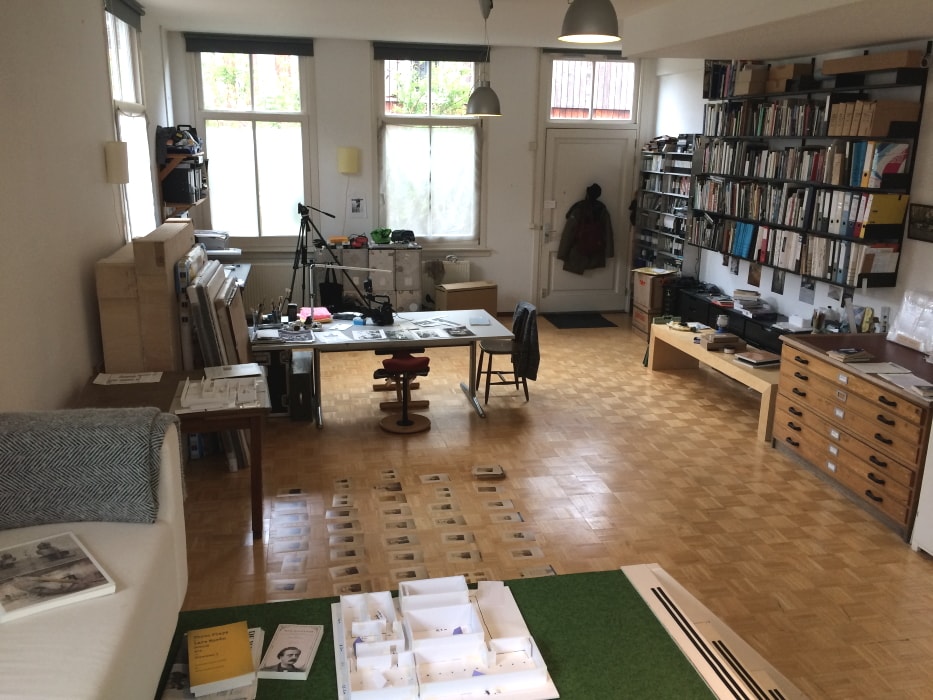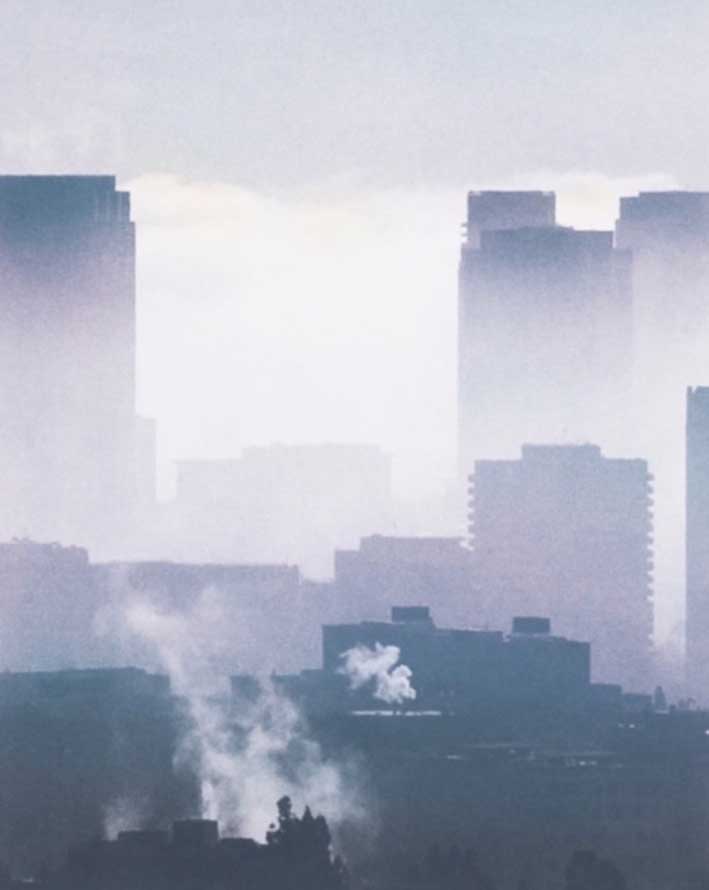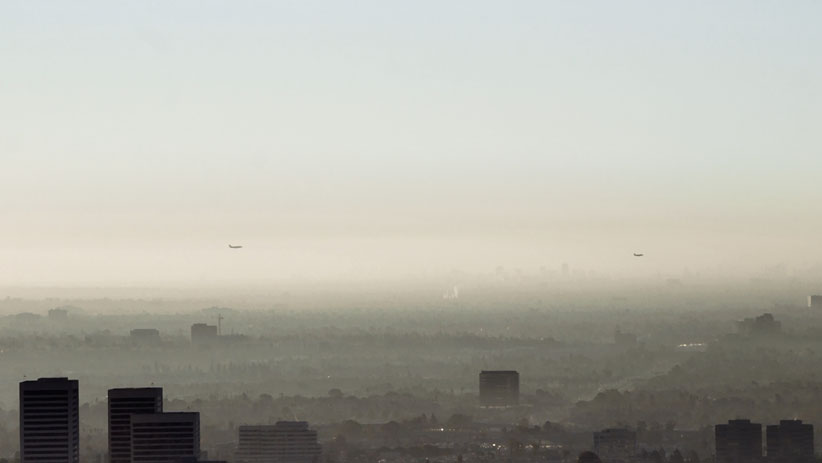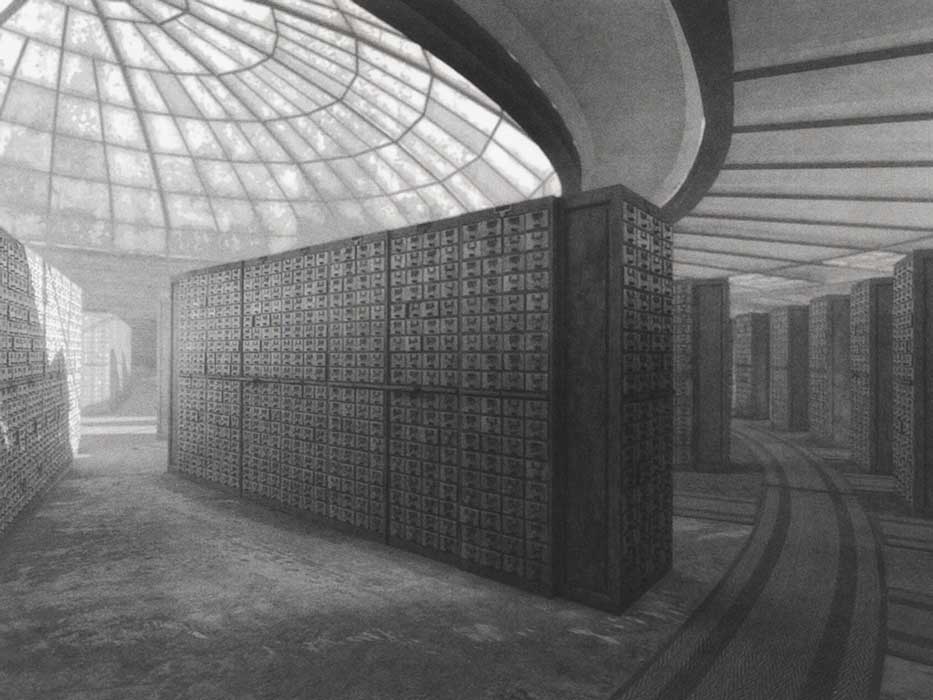Prologue
Fiona, suppose the current limitations were non-existent and we could now sit facing each other. Where do we speak together? We are in my studio in the east of Amsterdam close to the river. It’s hidden away in a courtyard off the street. Quiet and sunny; the sunlight filters through the leaves in front of the windows. I like the early mornings, the best time to concentrate and get work done. How and where do you currently live and work? I’ve been living in Amsterdam now for over thirty years, with year long residencies in Berlin (DAAD) and Los Angeles (Getty) and shorter residencies in Budapest and Stockholm. I was born in Indonesia and grew up in Australia. Which stations and people have shaped you? My biography and my mixed background have definitely shaped me, but I find it boring and limiting if interviewers only want to talk about my background and my cultural identity as a migrant from a mixed background. Which authors and books can be found on your bookshelf? Which books have influenced or shaped you and what are you currently reading? For a new piece I am currently working on I have been reading/rereading a lot of Kafka. His diaries in particular. Here you can see him shaping his stories, drafting and redrafting them (handwritten of course) and trying out sentences. The repetition I find interesting. I alternate back and forth from reading them in English and in German. It’s easier for me to read the English translation but his German sentences show so clearly his legal training. I have also been dipping in and out of Daniel Defoe’s A Journal of the Plague Year; pertinent reading even if it is 400 years old. What music do you listen to and when? I listen to BBC radio quite a lot. But when I need to concentrate hard there’s usually no music on in the background. If you would cook something for us, what would it be? What do you like to eat most and what do you think about breakfast? I can’t really cook here in the studio, so I would bring a salad and some fruit from home, which is close by. Since a few months I’ve been skipping breakfast, that is eating breakfast/brunch at the end of the morning. By that time I’m usually really hungry. Breakfast these days is usually muesli and yoghurt, yum. What kind of sport or counterbalance do you practice? T’ai Chi, walking, cycling. Yoga sometimes, meditation sometimes. Do you have a special passions for which you are burning? Gardening.
Image Above: Portrait Fiona Tan, photo Mark Kohn, courtesy Fiona Tan
Interview
To begin, please tell us your artistic vita in a few sentences.
Artist and filmmaker, working mostly with lens-based, time-based media. Known for film and video installations and photographic works. My works have been presented at the Documenta 11 and various international biennials. I represented The Netherlands at the Venice Biennale in 2009 with the solo presentation ‘Disorient’. Recent solo exhibitions include Sprengel Museum, Hannover, MAC’s, Grand Hornu, BE, Museum Ludwig, Cologne, Guggenheim Museum, Bilbao, Museum für moderne Kunst, Frankfurt, Vancouver Artgallery, the Baltic, Gateshead, Philadelphia Museum of Art. My work is included in collections such as the Tate Modern, Guggenheim, Centre Pompidou, Stedelijk Museum Amsterdam, Neue Nationalgalerie, Berlin and Schaulager, Basel.In October/November 2020 the mid-career retrospective Mit der anderen Hand / With the other hand will open with a double solo exhibition simultaneously at Museum der Moderne Salzburg and Kunsthalle Krems, Austria.

Two sentences about your current project / the upcoming exhibition at Gallery Weekend.
I am showing the video installation Elsewhere (2018) and two series of photogravures, Studies for Elsewhere and Shadow Archive at BORCH Gallery in Charlottenburg. Thinking about current attitudes towards the future and reading classic utopian literature, for Elsewhere I filmed from my studio the view across the vast, sprawling city of Los Angeles.
What are you most concerned about at the moment; what is on your mind?
Primary concern right now is getting the new pieces finished on time for both forthcoming solo exhibitions in Salzburg and Krems in Austria. Like most people I have been finding it hard to concentrate during these past months but I feel so lucky that, as I work on my own, I can still go to my studio every day and work here and so do not have to stay at home all day.
How did you come to art? Why art?
I started drawing already very early as a child and as a teenager I was always walking around with a camera taking pictures. It took me a while to pluck up the courage and admit that, if I could, I wanted to make things and take part in the ongoing conversation of what art can be.

What makes you happy at the moment? What is currently scaring you?
It’s been an interesting and at times worrying and saddening year. A good thing, in my opinion, to be humbled and to be reminded that we humans do not have total control over everything, over the future, over our safety. Our neighbour’s father died from Covid-19 in March – that brought the danger and the reality of the pandemic quite literally close to home. I know of people who were ill but who, months later, haven’t yet completely recovered. And there are friends with financial and psychological worries. At the same time, the quiet, the peace, the clean air at the beginning of the lockdown were very welcome. The community spirit and people’s concern for each other at the start of the outbreak was heartening and uplifting. It is a great shame that that spirit has not lasted.
Do you believe that art has a social responsibility? And what do you think it can do?
I think artists, just as any human being, have a social responsibility. Art is art, or at least it should be.

What makes your art special? What are the central themes of your work?
Explorations of memory, time and history are key. Initially I became known for a body of work that relied on the use of archival films, questioning the observer and the observed and challenging the assumptions of the colonial past. Portraiture has been explored in various works combining an analysis of its art-historical and sociological context with how time influences our perception of those portrayed. Recent works concentrate on how memory is connected to images in our mind and on how inaccurate and yet creative memory can be. I have a continuing interest in the motivations of the traveler or explorer. The question how we represent ourselves and what mechanisms determine how we interpret the representation of others, is something I repeatedly investigate, with them to reveal what is behind and also beyond the confines of the image.
How do you protect yourself from too much inspiration these days?
Is there such a thing as too much inspiration?

How much in your works is planned in advance – how much is created intuitively?
50/50. I used to say ‘shoot first, ask questions later’. But increasingly over the years I have found myself researching and preparing more and more. Having said that, gut feelings and intuition still remain important in decision-making.
What should your art effect on the viewer?
– – –
What are your (next) goals?
Recent events have led me to live more day by day.
What is your opinion about faith? Do you have principles of faith or is there a motto?
– – –
Which project would you still like to realize, if lack of time, courage or financial resources would not play a role?
– – –
What do you consider to be attributes of good art?
– – –
Is one born as an artist*? Or is studying art compulsory in your view?
I don’t think this is a question which can be answered in the same way for everybody. Some individuals are ‘born artists’ I think, although that does not necessarily mean that they end up as recognised artists. Others come to it later in life, sometimes through study, but certainly not always.
To whom do you show a new work first?
Often I show it first to my partner, but it can depend upon who comes to my studio.

What does the first hour of your day look like?
Up early, read or glance through the paper, drink tea. Ensure that my youngest son wakes up for school. Then I ride the bike to my studio (5 min.). Sometimes I walk (10 min.) I often get the most done first thing in the morning while my mind is still clear, definitely before lunch.
In Times of the internet of things, are galleries, from your point of view, still necessary? If so, why and what for?
The physical presence of my work is very important. The size, scale, the space within and around it, the way it relates to your body and appeals to the senses. This is true for almost all artworks. This encounter and experience (physically, sensorially, spatially, temporally, intellectually, emotionally) cannot be replaced by an online presentation, a virtual ‘Viewing Room’, a website, a youtube video or an iPad slideshow. Nor do I want it to be.
I am puzzled by the term ‘the internet of things’ here, I had to look it up to be sure of its definition, but even then I still am not sure why you include this in your question? Do you mean just ‘the internet’?
Epilogue
The exhibition Ideas of Utopia with photogravure projects and the video-installation Elsewhere (2018) by Fiona Tan can be seen from 12 September to 31 October 2020 at BORCH Gallery Berlin, Goethestraße 79, 10623 Berlin-Charlottenburg. Preview days: 9 – 11 September 10 am – 7 pm. Opening as part of Gallery Weekend Berlin: 12 and 13 September 2020, 12 – 7 pm. The exhibition is part of EMOP – European Month of Photography.
In times of Corona, when travel, studio visits and personal contacts are inappropriate or even impossible, the written interview remains an important medium to introduce artist personalities, to spread their messages and to stay in touch with art enthusiasts.






